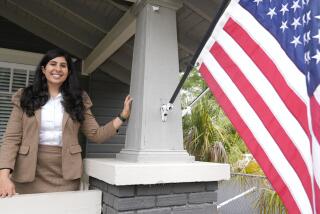1990 Census Methods No Longer Add Up
- Share via
WASHINGTON — With results of the 1990 census still spinning out of the computers, the critique is in: All concerned, from the Census Bureau to Congress, agree that it’s time to rethink the art of census-taking.
“From many different sources we have heard . . . we cannot afford to plan to take the next census as we have taken recent censuses,” said bureau Director Barbara Everitt Bryant, in testimony prepared for the Senate Governmental Affairs subcommittee on government information and regulation.
“The American public has grown too diverse and dynamic to be accurately counted solely by the traditional ‘head count’ approach,” the General Accounting Office reported recently, arguing that “fundamental changes must be implemented for a successful census in 2000.”
Such reasoning is based on these facts about the 1990 census: The bureau spent $2.6 billion, 65% more than the 1980 price tag, but the census contained 14.1 million errors and missed at least 4.7 million people, according to the GAO. In the 50 years since the bureau has begun measuring its accuracy, the 1990 census was the first that contained more errors than its predecessor.
Controversy over the 1990 census has ended up in the courts. The most widely publicized case, filed by New York City and several other communities, is attempting to force the Census Bureau to use adjusted population figures that have been weighted to compensate for the undercount.
The GAO and Census officials say that census-taking has gotten more difficult for a range of demographic and social reasons, including an increase in non-English speakers, undocumented immigrants, homeless people and families doubled up in housing.
At the same time, many Americans feel beleaguered by poll takers and junk mail and are less willing to cooperate. And the problem could get worse, say Census Bureau officials.
As a result, the bureau has begun testing options in the last year, with a goal of boosting participation rates over those using the method that has been in place since 1970. That relies on mailed questionnaires and, for those homes that did not return the forms, in-person interviews by census workers.
Even a slight improvement in the proportion of homes that return forms voluntarily would mean significant savings: For every additional 1% of households that did not mail back the questionnaire in 1990, the bureau estimated it was forced to spend an added $17 million and hire 7,000 more staff members.
Four questionnaires have been tested, including a “micro” form with fewer questions than the 1990 version, an even shorter postcard form, a “user-friendly” booklet designed to be easier to understand and a shortened “user-friendly” questionnaire.
Bryant, testifying before the House Post Office and Civil Service subcommittee on census and population earlier this month, said the tests showed rates are higher when the forms contain fewer questions.
But the shortest form, which asked only name and date of birth on a postcard, elicited no higher return rate than the five-question “micro” version.
The “user-friendly” questionnaire boosted return rates in the hard-to-count areas, but not in other areas. And completion rates in all areas improved significantly when households that failed to respond were mailed a second form.
More to Read
Get the L.A. Times Politics newsletter
Deeply reported insights into legislation, politics and policy from Sacramento, Washington and beyond. In your inbox twice per week.
You may occasionally receive promotional content from the Los Angeles Times.









